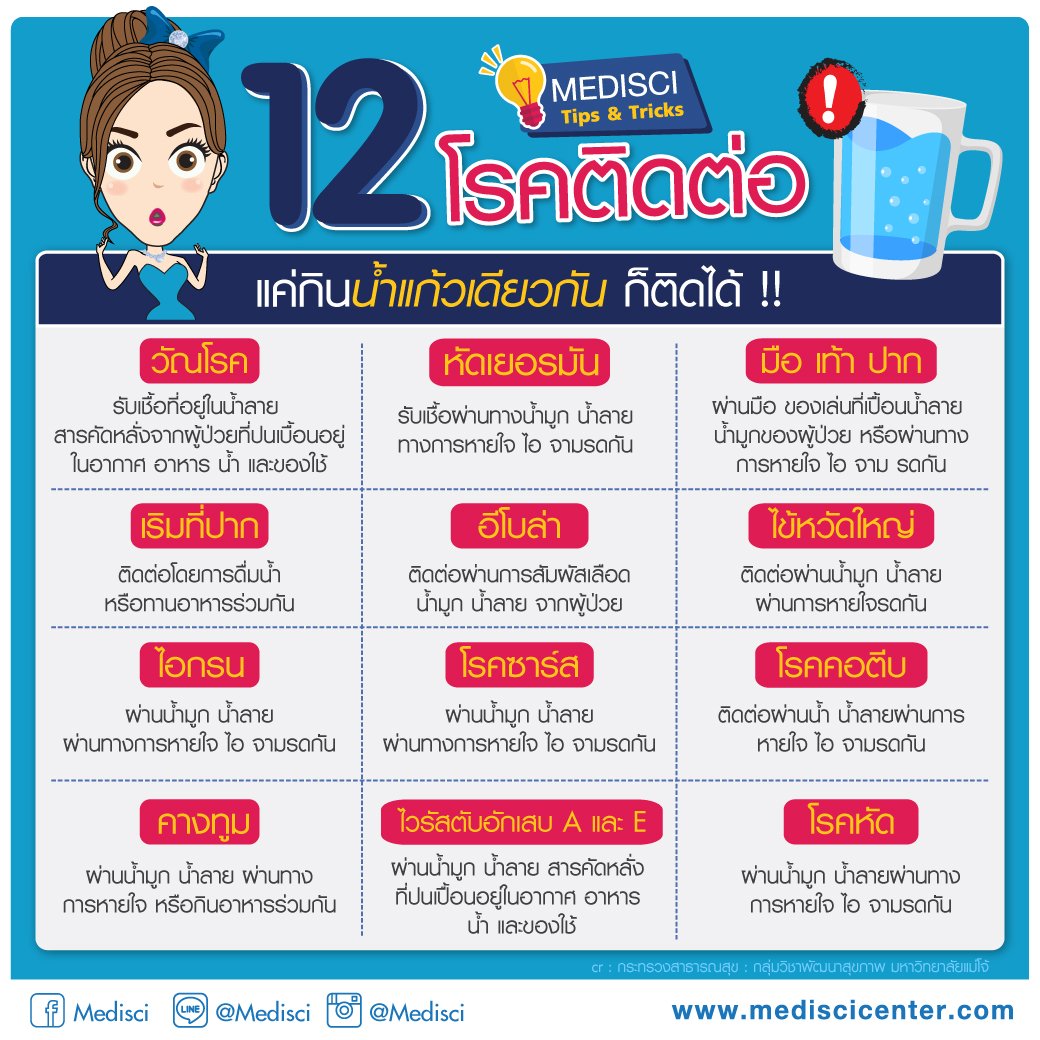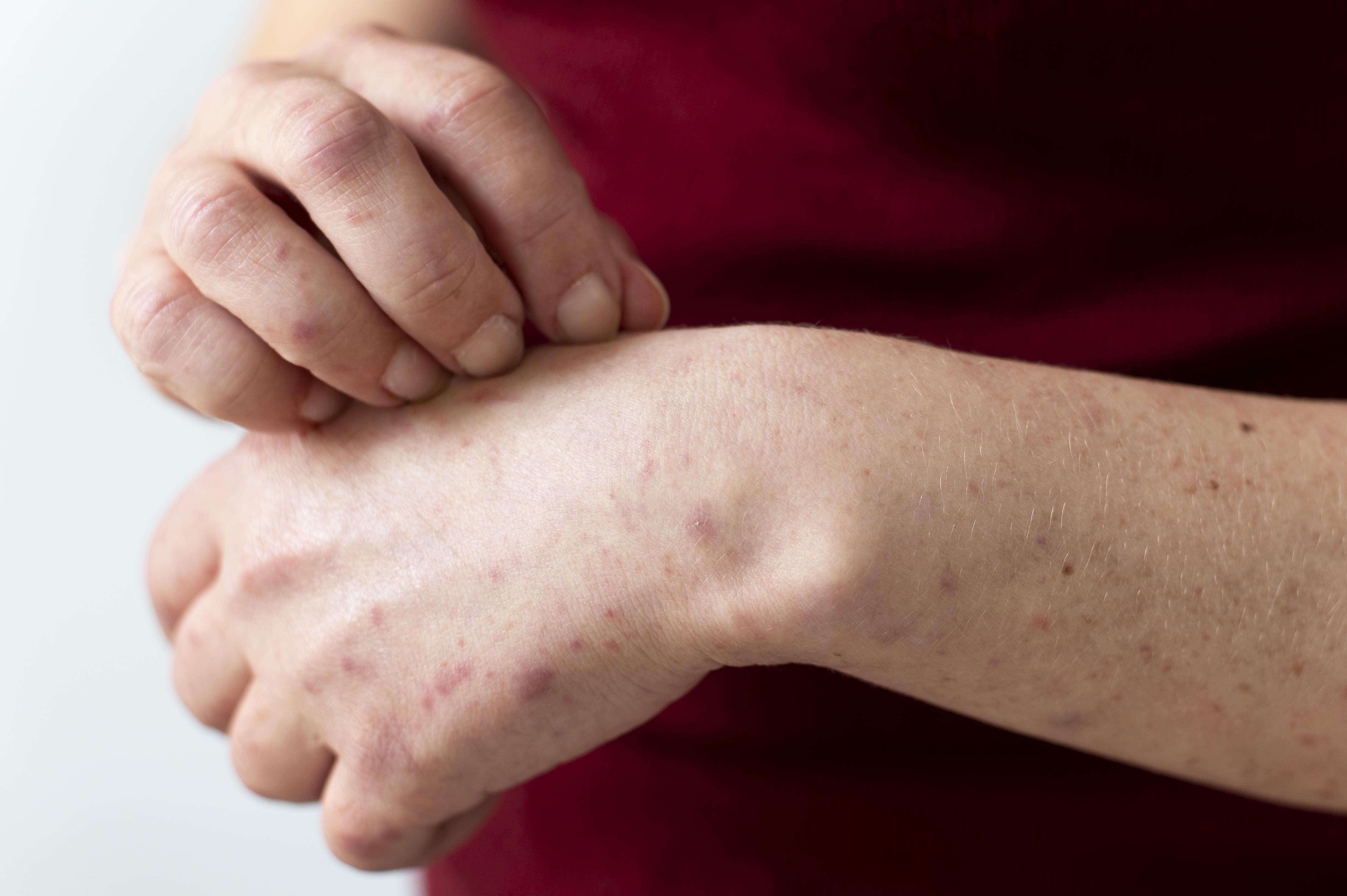12 Contagious Diseases. Just Drinking The Same Glass of Water

12 Contagious Diseases By Drinking The same Glass of Water
The following 12 infectious diseases can be transmitted through drinking the same glass of water.

1. Tuberculosis
Get infected through saliva secretions from patients contaminated in the air, food, water, and utensils
Tuberculosis Symptoms
- The main symptom of pulmonary tuberculosis is a chronic cough lasting 2 weeks or more.
Other symptoms may be weight loss, loss of appetite, fatigue, fever (usually afternoon, evening, or night), coughing up blood, chest pain, and shortness of breath. - If there are at least 2 symptoms or more, get tested for tuberculosis at the nearest medical facility.

2. Rubella
Infected through mucus, saliva, inhalation, coughing, and jaundice
Rubella Symptoms
Rubella is a disease that is often asymptomatic and almost asymptomatic, especially in children. Rubella usually appears between two and three weeks after a person is exposed to the virus. for a maximum of five days with the following symptoms
- A low fever of 38.9 Celsius or less.
- Headache
- Runny nose
- Red and inflamed eyes
- Enlarged lymph nodes: The enlarged lymph nodes have a soft surface and are usually found on the back of the skull, behind the neck, or behind the ears.
- Pink rash will begin to appear on the face and will begin to spread to the trunk, arms, and legs respectively.
- Joint pain is common in adolescent girls
3. Hand, foot, mouth
through hands, toys that have been contaminated with saliva or snot of the patient or through breathing, coughing, sneezing
The Symptoms
The initial symptoms of hand, foot, and mouth disease are similar to those of the common cold: there are multiple blisters or ulcers in the mouth. and have pain a red rash or clear blisters small size on the palms, fingers, soles of the feet or buttocks, and has a fever for 5-7 days

4. Mouth Herpes
Contact through drinking water or eating together. Mouth herpes symptoms
- A red swollen wound A blister with clear water and an itchy sensation on the lips. or in the mouth
- Fever, headache, fatigue, body aches
- Have pain or inflammation But not as much as the genital area.
- The wound will dry, scab, and disappear on its own in 7 -10 days.

5. Ebola
It is transmitted through contact with the patient's blood, snot, and saliva
Ebola Symptoms
Ebola is a severe acute disease caused by the virus. It usually manifests as an acute fever, severe weakness, muscle pain, headache, and sore throat, followed by vomiting, diarrhea, and skin rash. Kidney and liver dysfunction, and in some cases internal and external hemorrhage

6. Flu
It is transmitted through mucus, saliva, and breathing
Flu symptoms
- Have a high fever, hot and cold
- Severe muscle aches Especially on the back, upper arms, and thighs
- Headache, fatigue
- Anorexia
- Nasal congestion, clear mucus, dry cough
- In children, nausea, vomiting, and diarrhea may occur.

7. Whooping Cough
It is transmitted through mucus, saliva, through breathing, coughing, and jaundice
Whooping Cough Symptoms
- In the early stages, the patient will have a runny nose, stuffy nose, and a slight cough like a cold. This phase may last for 1-2 weeks
- Severe stage, the patient will have a continuous severe cough without rhythm, resting 5 or more times and at the end of the set The patient will try to take a deep breath. until a loud hoop sounded. In young children, cyanosis may develop due to a very strong cough.
- Most patients experience vomiting after coughing. Some patients may have hemorrhage in the white of the eye and hemorrhagic spots spread to the face and upper torso.
- Symptoms at this stage last from 10 days to 2 weeks, in some cases up to 2-6 weeks
- During the recovery period, the cough will gradually fade. The cough subsides and goes away in 6-10 weeks. A mild but mild cough may persist for several weeks.

8. SARS
It is transmitted through mucus, saliva, through breathing, coughing, and jaundice
SARS symptoms
Coughing, tremors, muscle aches and fevers, followed by rapid respiratory symptoms that include coughing and difficulty breathing. May be accompanied by diarrhea Symptoms may worsen for several days, in line with high levels of the virus in the blood 10 days after the onset of symptoms

9. Diphtheria
It is transmitted through water, saliva, through breathing, coughing, and jaundice
Diphtheria symptoms
Signs and symptoms of diphtheria usually occur 2-5 days after infection. These symptoms may include:
- Ulcers and gray mucous membranes occur in the throat and tonsils
- High fever of 38 degrees Celsius or more
- chills
- Feeling tired, weak
- have a headache
- runny nose
- Sore throat, cough, hoarseness
- swollen lymph nodes in the neck
- Difficulty swallowing or feel pain when swallowing
- Shortness of breath, tiredness, trouble breathing
10. Mumps
It is transmitted through mucus, saliva, through breathing or eating together
Mumps Symptoms
Mumps has symptoms that are noticeable. The salivary glands next to the ear are noticeably painful and swollen. and appear the first symptoms of the disease as follows
- High fever (38 degrees Celsius or higher)
- dry mouth
- Anorexia
- headache
- joint pain
- muscle aches
- Fatigue, exhaustion

11. Hepatitis A and E
It is transmitted through mucus, saliva, and secretions from patients contaminated in the air, food, water, and utensils
Hepatitis A and E Symptoms
- Hepatitis A: fever, fatigue, loss of appetite, vomiting, jaundice
- Hepatitis E virus: yellow eyes, leftovers, fatigue
12. Measles
It is transmitted through mucus, saliva, through breathing, coughing, and jaundice
Measles Symptoms
Measles starts with symptoms similar to the common cold. Symptoms onset about 10 days after infection are as follows:
- Cold-like symptoms such as stuffy nose, sneezing, and coughing
- Eye pain, red eyes, watery eyes, may be more sensitive to light
- Fever up to 40 degrees Celsius
- muscle pain
- Do not want to eat
- Tired, irritable and exhausted
- Enlarged lymph nodes
- Grayish-white spots appear inside the cheekbones
Contact Us
- Call-center: 089-9006100
- North Park (Ngam Wong Wan): 02-954-9440
- Ratchapruek: 02-863-8765
- Sukhumvit 39: 02-259-6992
- Line OA: @MEDISCI






